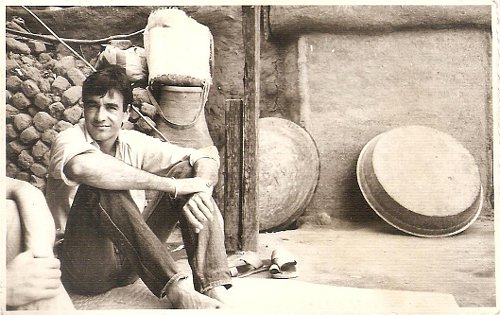
Academic Director
Rules Are Made To Be Broken — Scott Thornbury
The first rule that I broke as a new teacher was using translation in class. I can’t remember being told not to, but everything on my initial training was geared to a direct method, no mother-tongue, kind of methodology. Moreover, translation was considered an unreliable means of conveying meaning, given the differences between languages and cultures. One person’s clock is another person’s watch, so it’s better to use a picture of a watch than to say ‘watch’, lest the students think it is a clock, or vice versa. For these reasons, translation was considered to be a highly sophisticated skill, only to be tackled with the most advanced students.
“The use of the students’ mother tongue need not be a taboo, and that in fact it can be exploited as a very natural prompt for real communication”
But I did it with beginners. I was teaching in Egypt, and had to teach a lesson on basic description using there is…/there are…, adjectives, it’s got… it hasn’t got…, and so on, the theme being towns and villages. The towns and villages in the coursebook did not look like the towns and villages the students were used to, so I had a problem. I wanted to base the lesson around the kinds of village that my students would visit when they went home for the weekend, villages with mosques, sugar factories, covered markets, and maybe the odd Pharaonic monument. I would have used a picture of one had I had one, but I didn’t. So I had this idea of asking the school receptionist, who I knew came from Upper Egypt, to describe her village onto a tape, and to do it in Arabic. I hardly spoke any Arabic and I used this to my advantage. I took the tape into the class and asked my beginners to help me make sense of it. More than information gap, there was a language gap, and they were eager to fill it. I played it line by line and they shouted a rough translation at me, using mainly words rather than structures: “Mosque! Ferry!” and so on. I would stop and reformulate what they were telling me onto the board. It went something like this: “My village is very nice, it’s very quiet, it’s on the Nile, there is a large mosque in the centre, there is a sugar factory, there’s a primary school but there isn’t a secondary school. There is no university either. There is a ferry across the Nile.” And so on. By the time we had translated it reformulated it and put it on the board we had all the structures we needed for describing a town or village. And for practice, of course, they described their own villages – not so very different from the school receptionist’s.
“I learned that rules are made to be broken, and even if the resulting experience is not as productive as my Egyptian village lesson, you can always learn something from experimenting”
What did I learn from that lesson? That the use of the students’ mother tongue need not be a taboo, and that in fact it can be exploited as a very natural prompt for real communication. Nor is translation necessarily a very sophisticated skill – as we now know, thanks to online translation tools. I also learned that rules are made to be broken, and even if the resulting experience is not as productive as my Egyptian village lesson, you can always learn something from experimenting.



Very inspiring to read this and I hope people take note of this. When I did my initial training back at the turn of the century, it was still very much the case that use of the mother tongue was frowned upon. All talk of having used the L1 was done in hushed voices and only to those who you felt you could confide in. So strange and yet so pervasive an attitude!
Another thing I like about translation is that it puts the power (back) into the hands of the learners. Suddenly, it is their language you’re dealing with and they have a degree of command of at least this part of the day’s lessons. They are the experts in the L1, not you. This can be extremely empowering and we should never rule out the use of L1 as a teaching and learning tool.
Thanks, Adam, for that endorsement! The tide seems to be turning in favor of a more bilingual – or cross-lingual – approach to teaching second languages. Guy Cook’s recent book on the subject makes a fairly convincing case, and I’m pleased to be involved in the editing of a forthcoming title on the same topic myself. (Watch this space!)
Haha, the first rule that I broke as a new teacher was NOT using translation in class. So much about rules 🙂
Thanks for the brilliant example.
Hi Barbi – yes, the exclusive use of translation as a means of presenting or practising language items, or of processing text, is just as prejudicial as not using it at all!
The first rule I broke was allowing my students to use L1 in the classroom. Not excessively, but I felt total use of English was not realistic and (from my point of view) not particularly beneficial. To me it seemed natural that students in a monolingual class would want to use their own language to clarify certain items. I imagine in my early nervous teaching days they needed to use L1 just to figure out what I wanted them to do.
I always use L2 while giving instructions, but understand the need for students to mix it up. Anyway, always interesting to read your thoughts Scott. Best wishes.
Thanks for the comment, Barry. I suspect that this is often one of the first rules that is broken. It would be interesting to make a list of the ‘roads not traveled by’, ELT-wise. 🙂